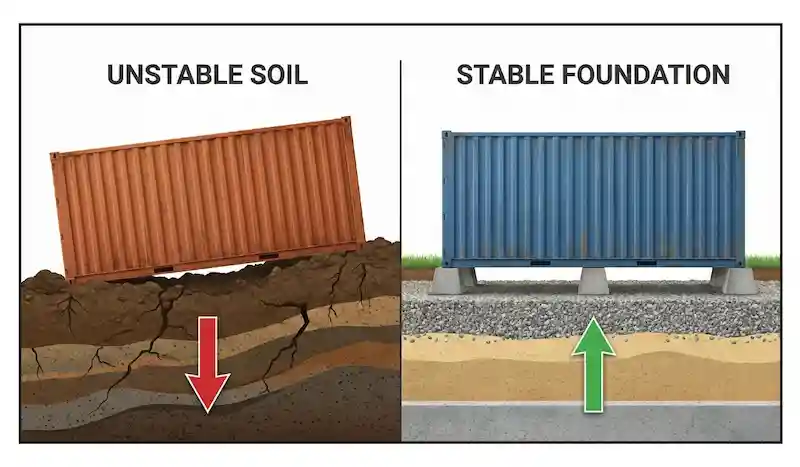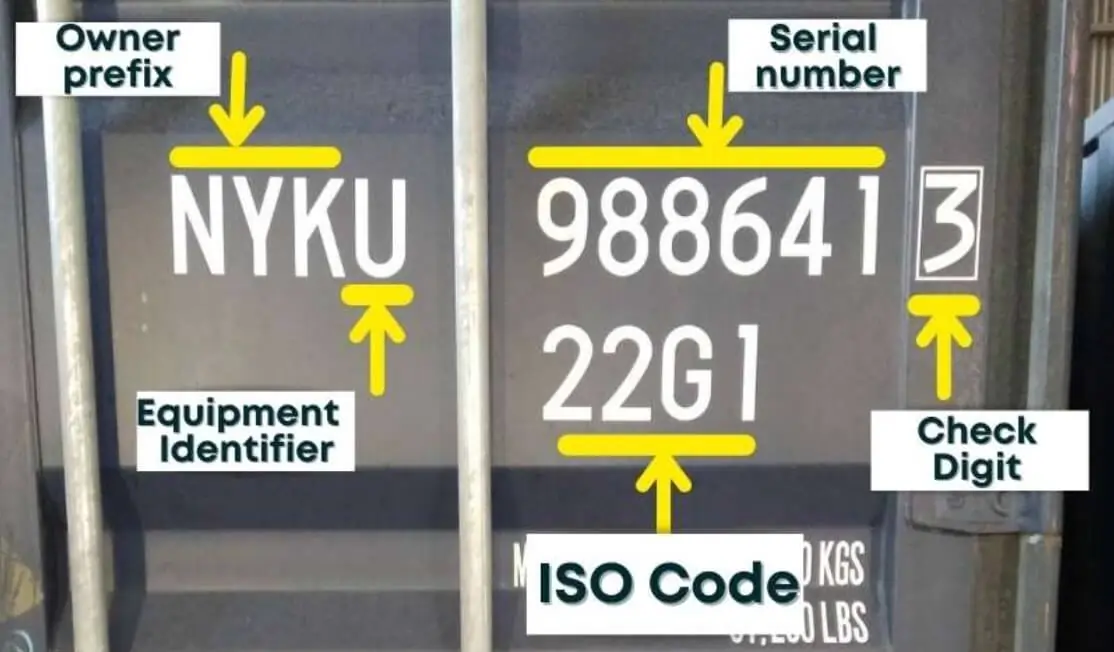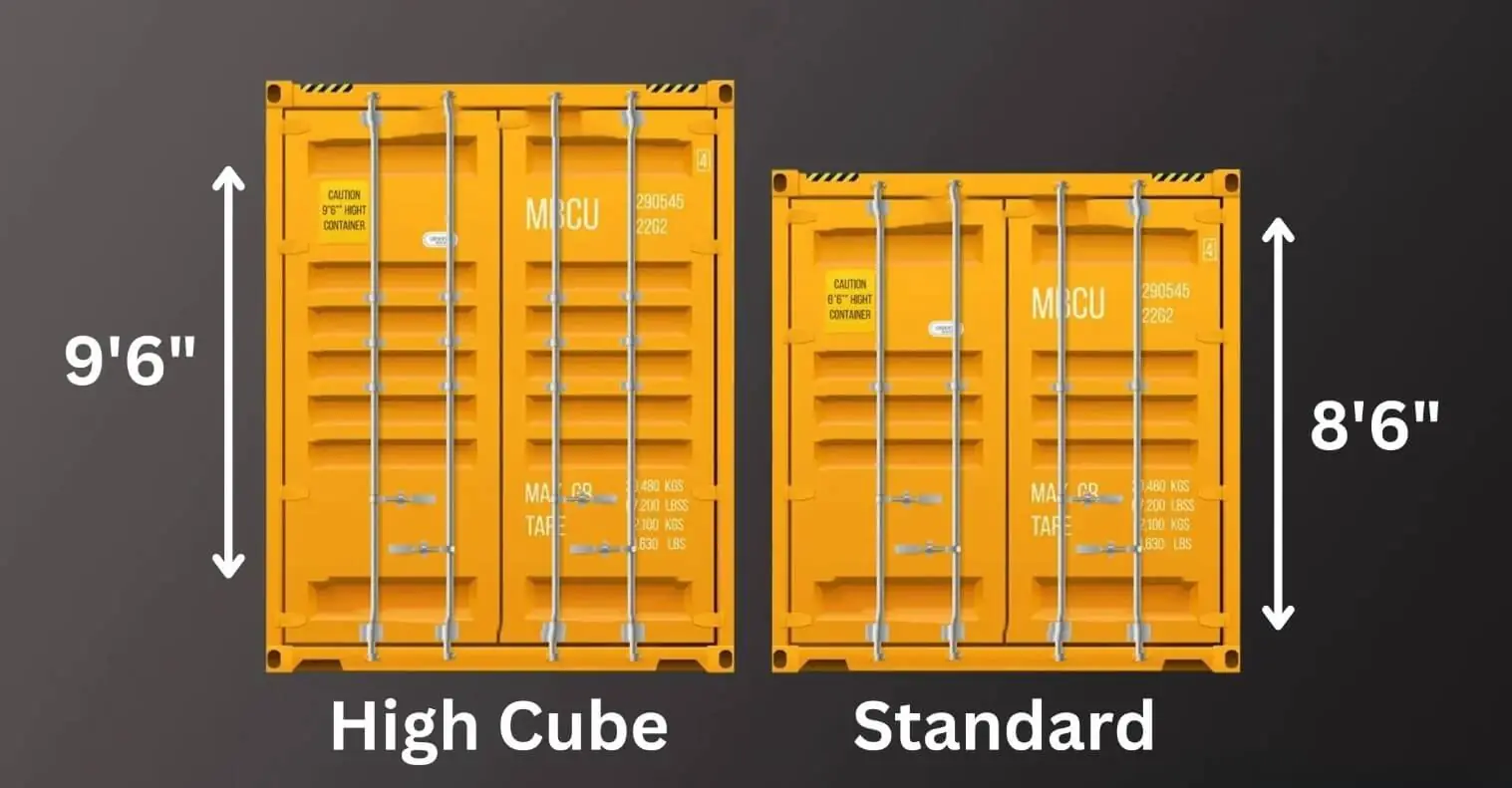Foundations for Shipping Containers: 4 Types and Design Ideas


Today, standard shipping containers experience many different uses beyond their initial function of transporting cargo. Container homes, cafes, restaurants, shops, garages, storage depots, gyms, workshops, greenhouses, campers, and swimming pools are quite common across the globe and US in particular.
Though containers are ready-made blocks with ceilings and floors, they need some support to rest on when modified into mobile buildings or customizable standalone structures. Hence, before you delve into remodeling an old shipping container into something new and start the building process, consider whether you need a foundation for your future project.
To help you avoid future complications, we’ve made a quick guide on the main types of shipping container foundations. You’ll find out when you need a shipping container foundation and your best options for shipping container footings for different projects and uses.

When and Why You Need Foundations for Shipping Containers
No matter if you build a house with shipping containers, set up a garden pool, or use a unit as it is for storage, you expect it to stand level, stable, and safe. However, if the ground beneath is not static, it can shift, slide, or sag, especially under a load of a heavy container.
Those natural ground movements are barely noticeable and largely depend on the soil type and condition. Yet, over time, ground changes will impact your container position and make it slightly tilt or heel to one side.
With that, properly built shipping container foundations create a solid and efficient base that will evenly distribute and securely handle the container weight and consistently maintain the unit in a straight and level position. This way, they will prevent structural damage or aesthetic problems and ensure your peace of mind.
Most Common Types of Shipping Container Foundations
Understanding that you need secure support for your cargo container building is not enough to get the right groundwork. The type of shipping container foundation construction that will best work for your project depends on multiple factors, including soil mechanics, geotechnical engineering, math calculations, and other technical aspects that determine specific shipping container foundation requirements in each case.
To give you a better understanding of container footings overall, we’ll consider the four main types of foundations that are most widely used and appear to be the most reliable in different scenarios.
Pier Supports
Piers are concrete blocks reinforced with steel rods from the inside to make the whole structure stronger, more resistant to tension, and capable of supporting high loads. Square in shape, piers lift a container unit above the ground level and securely hold it in a stable position even if the terrain shifts or sinks.

When you buy a 40ft shipping container to make a house out of it, you’ll keep it in place and level by installing a 50×50 cm pier in each corner and two supports right in the middle.
Pier supports are by far the most popular example of shipping container foundations for DIY structures and projects with limited budgets since piers are quick and easy to install, requiring minimal equipment and excavation. At the same time, they create a reliable and solid base on any ground.
Piles
Pile supports can be made of wood, metal, or concrete, depending on the specific situation and project plan. The most common subtype of piles is big cylindrical steel tubes that are driven or hammered into the terrain. Once in place, each pile is covered with a concrete block to create a sturdy resting base for a container.

Piles entail complex planning and laborsome installation. As such, they are expensive and are not the best shipping container foundation example for DIY structures. On the other hand, pile supports for commercial projects and land plots with weak soil and ground waters close to the top, where different foundation types wouldn’t work.
Concrete Slab
A slab foundation is a typical kind of underlying bedding for traditional homes. Not only does it create a supporting structure for the house, but it also ensures smooth concrete flooring. Speaking of container homes, it’s a great option when even and balanced weight distribution is vital. Normally, it’s required with soft and saggy soils.

Concrete slabs are a failproof option for whatever container building you have in mind. Yet, get ready to dig a lot and use a lot of concrete. As a result, slab foundations are much more expensive than other types of support.
Strip Bedding
Strip or trench beddings are a kind of hybrid of piers and concrete slabs. Instead of blocks, you have concrete strips installed along the perimeter of your future container building, thus encapsulating the crawlspace underneath a container. As a result, this foundation type ensures excellent protection for utility lines and, at the same time, leaves them accessible.

Strip beddings ensure enhanced support for smaller and mid-sized structures and work great on soils with low bearing capacity, making an easy alternative to piles and piers.
Other Ideas for Designing a Foundation for a Shipping Container
The four main examples of shipping container foundations described above are so-called permanent bases installed for consistent long-term use and need special heavy-duty equipment or demolition to be removed. This type offers the highest level of safety, stability, and security and is a recommendation for container buildings you are not going to move.
Yet, there are other design ideas for shipping container foundations apt for mobile container structures or those installed for a certain period of time. These temporary foundations protect your container from soil damage and are the most affordable and semi-permanent foundations that ensure secure yet removable support.

Wood Beams
You can use either a frame footing made of thick timber or lay wooden beams in a row to create a supporting base for a container. Railroad ties are often used for this purpose since they are thick and strong enough to carry the load of a container and are generally treated with special chemicals to resist decay and corrosion due to extended contact with soil.
Wood beams are excellent temporary support for mobile offices, campers, and mobile restrooms used on construction and building sites.

Gravel Pad
While keeping containers level and stable, gravel pads keep container bottom rails off the ground for better moisture drainage to prevent corrosion. This foundation type is widely used in wet and rainy areas, as well as for cafes and open bars in parks, open-air festivals, and other entertainment events. Subject to proper container fixtures, gravel pads could be used as permanent bases for domestic garden sheds or workshops.
Final Thoughts
To conclude, unless you have a simple container unit you are going to relocate from time to time, you’ll need some sort of foundation for a shipping container structure to make it stable and straight. So take your time to explore your options and select the right type of underlying support for your needs.
In the meantime, if you are searching for a used cargo unit for upcycling, in Pelican Containers, we have a wide choice to offer. On our list, you can find anything from a 40ft high cube shipping container to smaller and more compact versions for mobile projects. Just contact us for a quote.
Benefits of a Standard Shipping Container - Pelican Containers
A standard container can be the perfect solution for all your cargo and storage related problems. Serve stand-alone storage, living space, or can be cut and divided into multiple smaller storage boxes. CSC certification makes these containers fit for any intermodal transportation. An ISO-compliant design ensures that our boxes get along well with other containers and are used for almost all purposes. From transit to revamping them into your living homes they have always been an excellent option.
Vanessa is a dedicated writer and content enthusiast at Pelican Containers. With a background in practical writing and a keen eye for clarity, she transforms complex container topics into easy-to-understand and useful content. Her passion lies in exploring the evolving world of container usage — from smart storage hacks to global logistics trends.
When she's not writing, Vanessa loves discovering creative shipping container projects or traveling to find new inspiration.
Explore thoughtful, informative, and accessible content with Vanessa!
Vanessa is a dedicated writer and content enthusiast at Pelican Containers. With a background in practical writing and a keen eye for clarity, she transforms complex container topics into easy-to-understand and useful content. Her passion lies in exploring the evolving world of container usage — from smart storage hacks to global logistics trends.
When she's not writing, Vanessa loves discovering creative shipping container projects or traveling to find new inspiration.
Explore thoughtful, informative, and accessible content with Vanessa!
FAQ
How do I make shipping container foundation plans?
Foundation plans will depend on the type of project you have. Thus, placing wood beams or creating gravel bedding won’t require much planning, and you can do it on your own. Meanwhile, to set up a permanent foundation, you’d better consult with experts and hire a specialist.
How much does a shipping container home foundation cost?
A concrete foundation is the best type of support for a container home, especially when connecting several units. Pouring concrete bedding will cost anywhere from $4 to $25 per sq. foot.
Are shipping container foundation blocks safe?
Concrete foundation blocks are not similar to piers as you might think. They are not embedded in terrain and simply rest on the ground. Surely enough, they are less safe. However, they will work great on a firm ground surface as a temporary support.











